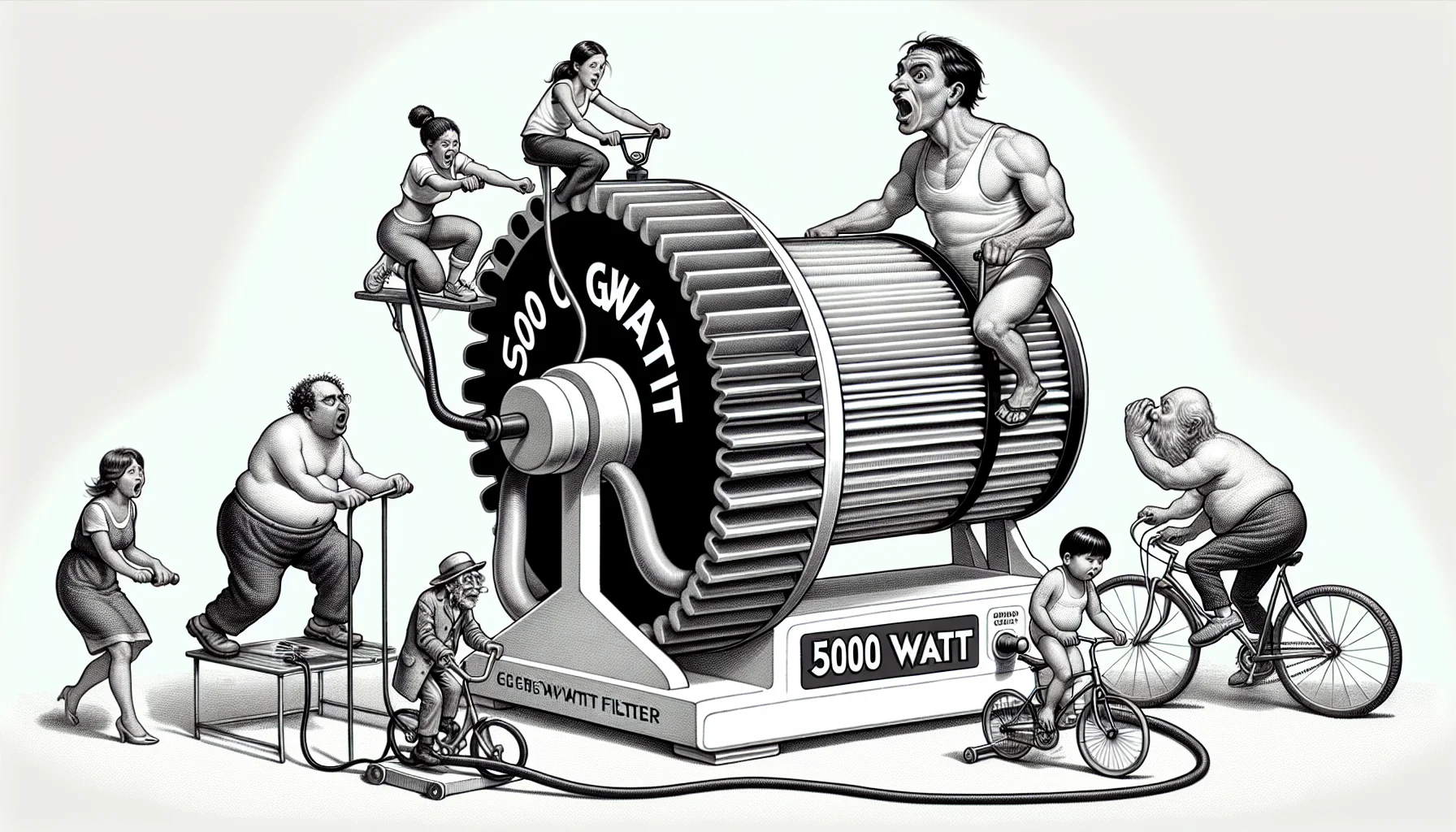5000 Watt Filter Quiz
Test Your Knowledge
Question of
Understanding 5000 Watt Filters
5000 Watt Filters play a crucial role in the process of generating electricity, especially in systems that require a stable and clean power supply. These filters are designed to handle high power levels, up to 5000 watts, making them an essential component in both commercial and residential power systems. Their primary function is to filter out any electrical noise or interference that might be present in the power supply. This ensures that the electrical devices connected to the system receive a smooth and uninterrupted flow of electricity, which is vital for their optimal operation and longevity. By removing these disturbances, 5000 Watt Filters help in preventing damage to sensitive equipment, reducing downtime, and improving the overall efficiency of the power generation process.
Types of 5000 Watt Filters
- Bandpass Filters
- Low Pass Filters
- High Pass Filters
- Notch Filters
- All-Pass Filters
How 5000 Watt Filters Work
5000 Watt filters are advanced components used in the realm of electricity generation and distribution to manage and stabilize the flow of electrical power. These filters operate by selectively blocking or reducing the amplitude of unwanted electrical frequencies, thus preventing them from causing interference or damage to electrical systems. They work by utilizing a combination of inductors, capacitors, and resistors to create a circuit that only allows frequencies within a certain range to pass through. This ensures that only the desired electrical current reaches the end device, improving efficiency and protecting sensitive equipment from potential harm caused by power surges or electromagnetic interference. The effectiveness of a 5000 Watt filter in managing high-power applications makes it a crucial tool in maintaining the integrity and reliability of electrical systems.
Benefits of Using 5000 Watt Filters
- Increased Efficiency in Power Generation
- Enhanced Durability and Longevity of Electrical Systems
- Significant Reduction in Energy Loss
- Improved Power Quality and Stability
- Cost Savings on Maintenance and Energy Consumption
- Environmentally Friendly by Reducing Carbon Footprint
- High Compatibility with Various Electrical Devices
- Effective in Handling High Power Loads
Installation Guide for 5000 Watt Filters
Installing a 5000 Watt Filter is a straightforward process if you follow these steps carefully. Ensure you have all the necessary tools and safety equipment before starting the installation.
- Turn off the main power supply to avoid any electrical hazards.
- Unbox the 5000 Watt Filter and inspect it for any visible damages or defects.
- Locate the installation area which should be close to the power source and capable of supporting the filter's weight.
- Mount the filter bracket securely onto the wall or frame, ensuring it's level and stable.
- Attach the 5000 Watt Filter to the bracket according to the manufacturer's instructions.
- Connect the filter to the power source using the appropriate cables and connectors. Ensure all connections are tight and secure.
- Ground the filter properly to prevent any electrical shocks or damage.
- Once everything is connected, turn the power supply back on and test the filter to ensure it's working correctly.
- Review the filter's operation manual for any specific settings or adjustments needed for optimal performance.
Maintenance Tips for 5000 Watt Filters
Maintaining 5000 Watt Filters is crucial for ensuring their longevity and optimal performance. These filters play a significant role in various applications, from industrial settings to residential uses, filtering out contaminants and protecting equipment from damage. Regular maintenance not only helps in prolonging the life of the filters but also in maintaining the efficiency of the systems they are part of. Ignoring maintenance can lead to reduced efficiency, higher energy consumption, and ultimately, the need for costly repairs or replacements.
- Regularly check the filter for any signs of wear or damage and replace if necessary.
- Clean the filter according to the manufacturer's instructions to prevent clogging and maintain airflow.
- Monitor the system's performance to detect any decrease in efficiency, which may indicate that the filter needs attention.
- Ensure that the filter is correctly installed and securely fitted to prevent any bypass of unfiltered air.
- Keep a maintenance log to track the filter's condition and any maintenance activities performed.
Comparing 5000 Watt Filters with Other Power Solutions
| Power Solution | Efficiency | Cost | Suitability for Different Electricity Generation Needs |
|---|---|---|---|
| 5000 Watt Filters | High | Medium | Best for small to medium scale operations |
| Solar Panels | Variable (weather dependent) | High initial cost, low operational cost | Best for areas with high sunlight exposure |
| Wind Turbines | Variable (wind dependent) | High initial cost, low operational cost | Best for areas with consistent wind speeds |
| Diesel Generators | Low | High operational cost | Suitable for emergency backup, not sustainable for long-term use |
| Hydroelectric Systems | High | Very high initial cost, low operational cost | Best for locations near water sources with significant elevation changes |












